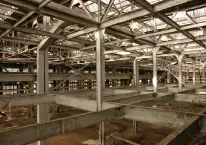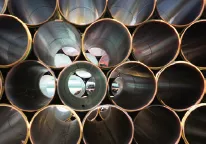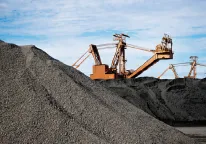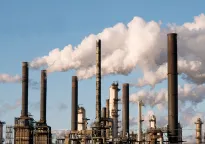![]()
the world of materials
PART I
1. Material wealth and health
In developed economies we live the good life for now – with an amazing level of comfort and interest created by our astonishing ability to make and transform materials. We’ve really only done this at scale in the past 150 years, in which time our use of engineered materials has rocketed, literally. However, if we have some concern about ‘sustainability’ we need to anticipate what effects our use might have on future generations – and we’re getting some clear indicators that there’s a problem.
2. Scale, uncertainty and estimation
If we are creating big problems, we need to look for big solutions: just putting our newspapers in the recycling bin won’t be enough. We need to answer the question “what really matters?” However, we can’t give a precise answer to that because we won’t know till after the event, so how should we deal with uncertainties about future impacts, and about the effect of different options for change?
3. Our uses of steel and aluminium
To understand what options we might have to change the way we use materials, we need to find out what we use them for at present and this requires some detective work. We also need to look at the key properties of the materials we use, to find out why they’re so attractive
4. Metal journeys
The materials we use start in the ground as ores / minerals and transforming them into finished goods is a long journey. If we can create a map of that journey, we can build up a picture of scale, anticipate the set of processes we need to explore, and by looking at the way the flow has evolved in the past, can start to predict what might be required in future.
5. Energy and emissions
Many of our concerns about sustainable materials relate to the requirements for energy to process them, so we need to find out where the energy is used, and how that use evolves. In response to concerns related to climate change, we need to know in particular which processes emit most greenhouse gases.
6. Where does the money go
Most of us have never directly purchased engineered materials—because we buy them when they have been formed into components and assembled into finished goods. So, when we buy cars or buildings, how much of the money flows back to the material producers, and who else is involved?
![]()
1 Material wealth and health
What are we worried about?
In developed economies we live the good life for now – with an amazing level of comfort and interest created by our astonishing ability to make and transform materials. We’ve really only done this at scale in the past 150 years, in which time our use of engineered materials has rocketed, literally. However, if we have some concern about ‘sustainability’ we need to anticipate what effects our use might have on future generations – and we’re getting some clear indicators that there’s a problem.
Welcome to this edition of “The World’s got Materials” and we’ll go straight into the first round: name the first thing that comes into your head when you hear the following place names: you must answer immediately. San Francisco, Golden Gate Bridge; Paris, Eiffel Tower; Hong Kong, New York and Shanghai, skyscrapers; Sydney, Harbour Bridge; North Pole, pole. Excellent. A perfect score, so we’ll move straight on to the second round: for each of the following decades name its key icon. 1960s, moon landing; 1970s, cassette decks and VCRs; 1980s, personal computers; 1990s, internet; 2000s, mobile phones. Very good, albeit a little selective, and finally in the third round, tell us how you spend most of your money: housing; car and other travel; food. Congratulations! A perfect set of answers and, apart from some of the food everything you’ve mentioned depends on energy-intensive materials.
We learnt at school the progression from stone age, bronze age, iron age through the dark and middle ages, age of discovery then enlightenment and on to machine and information ages. But we could equally label the past 100 years, our era, as the material age. Our ability to find and convert fuels into intense heat has allowed us to extract and convert natural ores and minerals into the metals, ceramics and polymers with which we have constructed all our recent icons and inventions, and on which we spend most of our money. This phenomenon is so common, and largely so well hidden, that we are hardly aware how recent it is: Joseph Aspdin in Leeds first patented the production of Portland Cement, the basis of modern concrete and mortar, in 1824; Henry Bessemer in Cheltenham patented his steel making process in 1855; Charles Hall in Ohio in 1886 and simultaneously but independently Paul Héroult in Paris worked out how to produce aluminium cheaply. These inventions, all occurring during the lives of our grandparents’ grandparents, and their equivalents for plastics and industrial paper production, transformed the economics of materials from precious to commodity, and opened the door to our current remarkable dependence on materials. In just over 100 years, global production has grown from virtually nothing at the turn of the 20th century to the point that we now make more than 10 times our body weight of these five materials every year, for every person alive.
A Bessemer converter in which hot air is blown through liquid iron to burn off impurities and so produce cheap, malleable steel
Our primary use of materials has been to live in more comfort in much higher densities, while travelling much greater distances. In the past 100 years we have shifted rapidly from rural to urban dwelling, and can sleep, work and relax in remarkable comfort in cities, solely because we have the materials to build, heat, cool and light safe interior spaces at high density and to travel rapidly and comfortably between them. In fact, such is their attraction that in 2009, for the first time in history, half the world’s population lived in cities. Worldwide, we now have 21 mega-cities, with more than 10 million people each, housing nearly a tenth of the world’s population1. And although large cities appear to be efficient, moving people to cities tends to increase economic growth, both within the city and in the surrounding rural areas, leading to an increase in demand for materials.
Making, transforming and buying these fantastic materials uses a good deal of our money. Around one-third of a billion people worldwide2, 5 % of all of us, are directly transforming the materials for us and 10 % of our collective spending goes to the companies who make these materials.
All of this sounds terrific: what fortunate people we are to have such apparently unlimited access to such high-quality but cheap material that we use to create such a great lifestyle. No one has ever lived like us before. We are the lifestyle kings and queens of history!
But of course no fairytale is worth telling if there isn’t a villain—without the wolf, we’d remember neither Little Red Riding Hood nor her grandmother—and this book exists because there are several baddies roaming around our material world. To find out more, where else could we turn other than to the BBC who introduce their evening news programme with the sonorous bongs of Big Ben (13.5 tonnes of cast iron, made at the Whitechapel Bell Foundry in 1858):3-6
The clocktower of the Palace of Westminster, which houses Big Ben
12th October 2010
Villagers despair in Hungary’s red wasteland
Around 600,000 tonnes of toxic red mud, a by-product of washing bauxite in sodium hydroxide to create alumina, covered around 40 square kilometres, may take a year to clean up. The accident injured more than 150 people and has claimed 10 lives. Hungary’s Ajka Alumina Plant produces around 0.5 % of global alumina output.
20th October 2010
Rio Tinto i...










